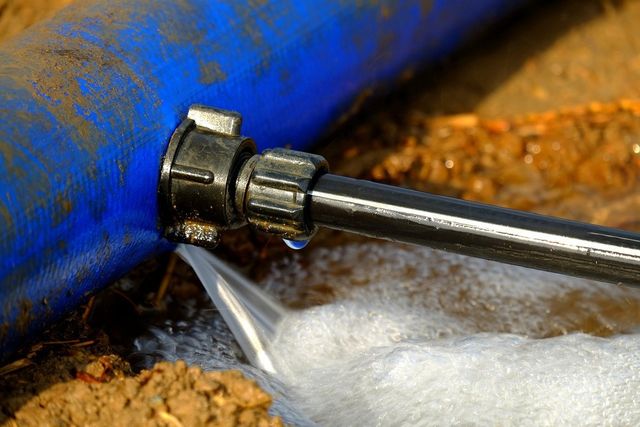Exactly how to Examine If Your Residence Has a Covert Leak
Exactly how to Examine If Your Residence Has a Covert Leak
Blog Article
We have discovered this article involving Top leak detection hacks below on the web and figured it made perfect sense to write about it with you in this article.

Early detection of dripping water lines can mitigate a prospective disaster. Some little water leakages may not be visible.
1. Take A Look At the Water Meter
Every home has a water meter. Inspecting it is a surefire way that aids you uncover leakages. For starters, turn off all the water sources. Ensure no person will certainly purge, make use of the faucet, shower, run the cleaning maker or dish washer. From there, most likely to the meter and watch if it will transform. Given that no one is using it, there must be no movements. That indicates a fast-moving leak if it relocates. Likewise, if you spot no changes, wait an hour or more and examine back again. This indicates you may have a sluggish leakage that might also be underground.
2. Inspect Water Intake
If you identify sudden changes, regardless of your usage being the exact same, it implies that you have leaks in your plumbing system. An abrupt spike in your bill suggests a fast-moving leak.
On the other hand, a constant boost each month, even with the same habits, reveals you have a slow-moving leakage that's also slowly intensifying. Call a plumber to completely inspect your residential or commercial property, especially if you feel a warm area on your floor with piping below.
3. Do a Food Coloring Test
When it comes to water consumption, 30% comes from commodes. If the color in some way infiltrates your bowl during that time without flushing, there's a leak in between the container and bowl.
4. Asses Exterior Lines
Do not neglect to examine your outside water lines too. Needs to water seep out of the connection, you have a loose rubber gasket. One little leakage can squander tons of water as well as surge your water bill.
5. Assess the circumstance as well as check
Property owners must make it a practice to examine under the sink counters and also inside closets for any kind of bad odor or mold and mildew development. These 2 warnings show a leakage so punctual attention is needed. Doing routine inspections, also bi-annually, can save you from a significant problem.
Examine for discolorations as well as damaging as most pipelines as well as home appliances have a life expectations. If you think leaking water lines in your plumbing system, don't wait for it to escalate.
Early detection of leaking water lines can reduce a possible disaster. Some tiny water leakages may not be visible. Checking it is a proven way that assists you find leakages. One tiny leak can throw away bunches of water and increase your water expense.
If you suspect leaking water lines in your plumbing system, do not wait for it to escalate.
WARNING SIGNS OF WATER LEAKAGE BEHIND THE WALL
PERSISTENT MUSTY ODORS
As water slowly drips from a leaky pipe inside the wall, flooring and sheetrock stay damp and develop an odor similar to wet cardboard. It generates a musty smell that can help you find hidden leaks.
MOLD IN UNUSUAL AREAS
Mold usually grows in wet areas like kitchens, baths and laundry rooms. If you spot the stuff on walls or baseboards in other rooms of the house, it’s a good indicator of undetected water leaks.
STAINS THAT GROW
When mold thrives around a leaky pipe, it sometimes takes hold on the inside surface of the affected wall. A growing stain on otherwise clean sheetrock is often your sign of a hidden plumbing problem.
PEELING OR BUBBLING WALLPAPER / PAINT
This clue is easy to miss in rooms that don’t get much use. When you see wallpaper separating along seams or paint bubbling or flaking off the wall, blame sheetrock that stays wet because of an undetected leak.
BUCKLED CEILINGS AND STAINED FLOORS
If ceilings or floors in bathrooms, kitchens or laundry areas develop structural problems, don’t rule out constant damp inside the walls. Wet sheetrock can affect adjacent framing, flooring and ceilings.
https://www.servicemasterbyzaba.com/blog/how-to-detect-water-leakage-in-walls/

We hope you enjoyed our excerpt about Locating water leaks. Many thanks for taking a few minutes to read through our piece of content. If you enjoyed reading our page if you please do not forget to share it. Thanks a lot for going through it.
Report this page